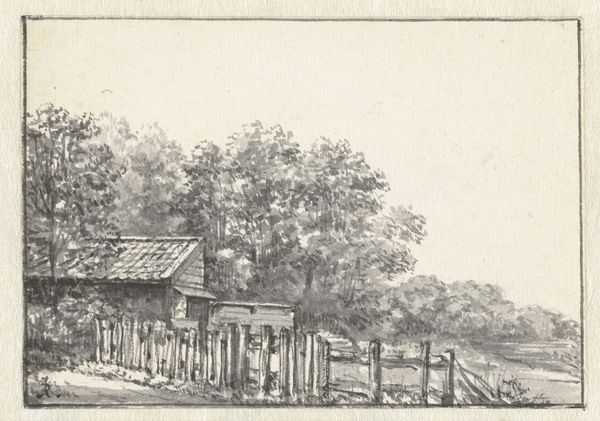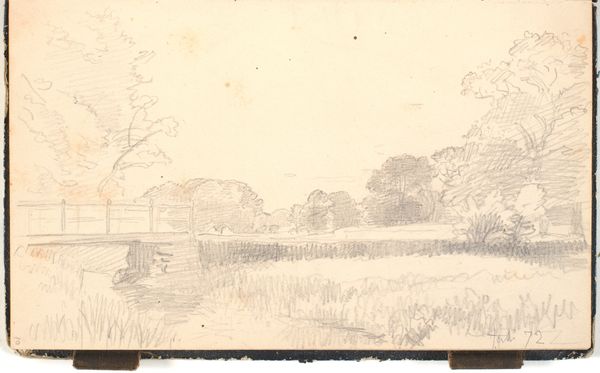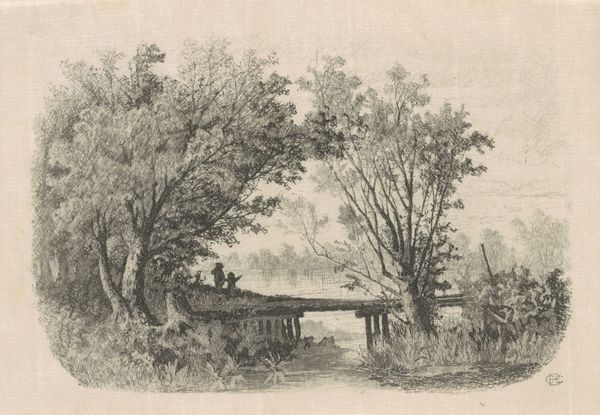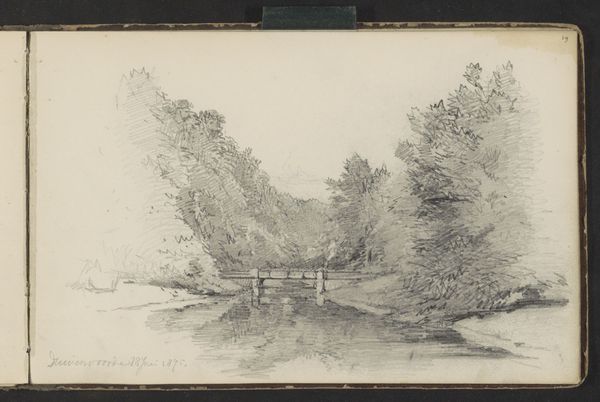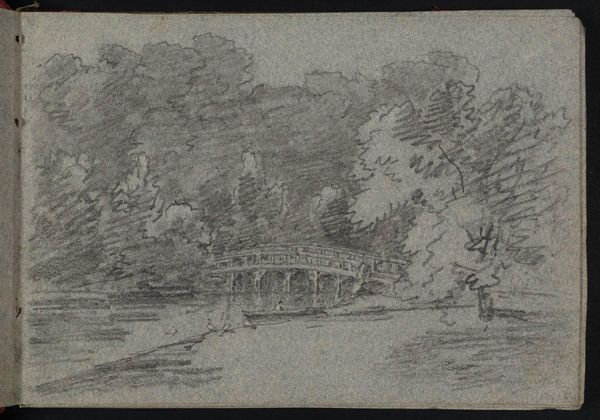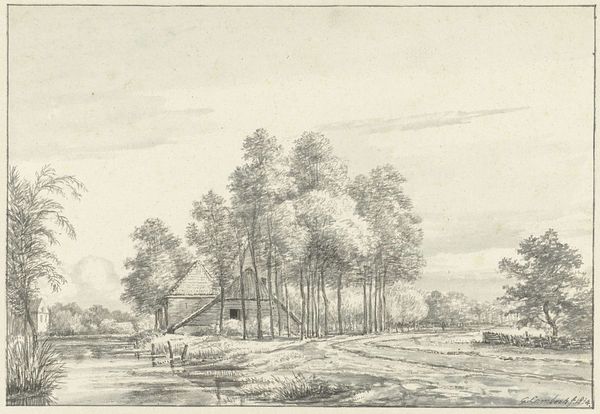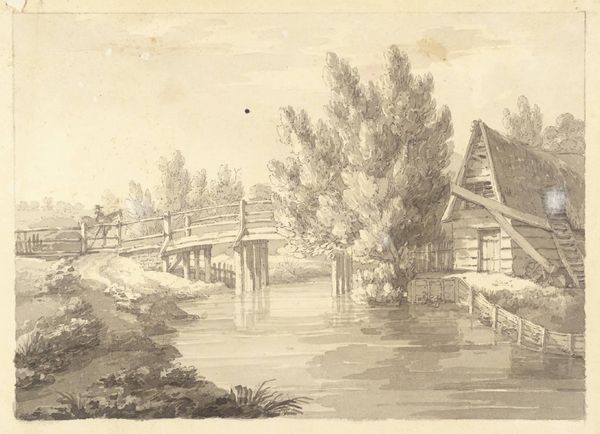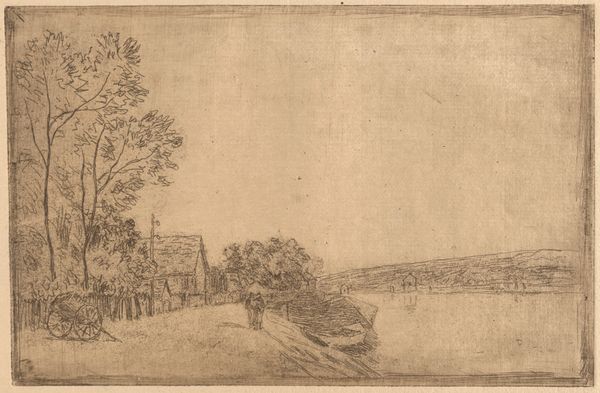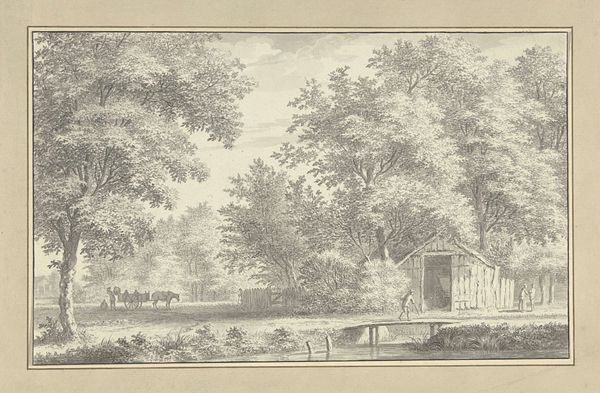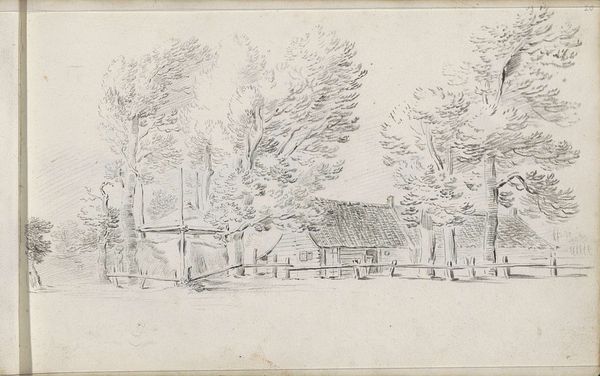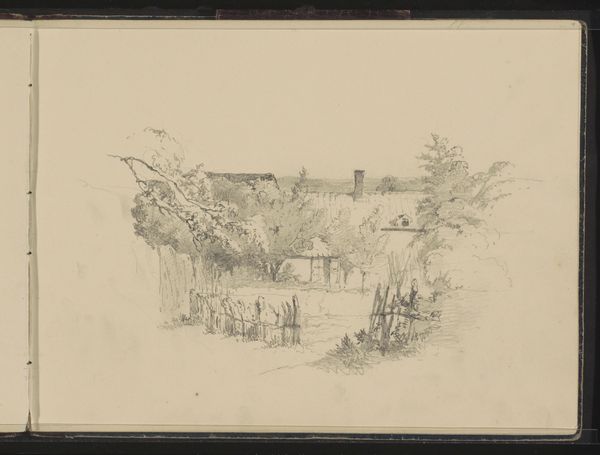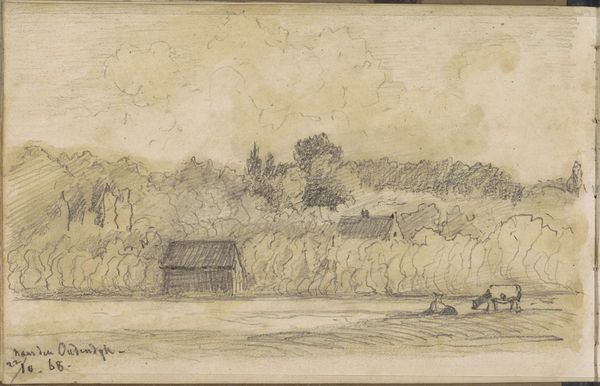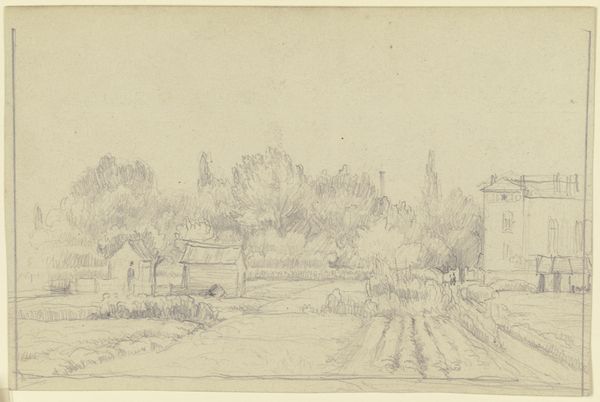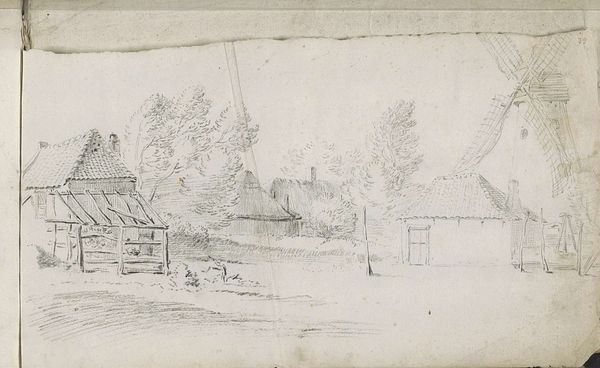
drawing, ink, pencil
#
drawing
#
landscape
#
etching
#
ink
#
romanticism
#
pencil
Dimensions: 165 mm (height) x 253 mm (width) (bladmaal)
Editor: This delicate drawing, "Parti fra Langelinje," dating from 1810 to 1848, is attributed to Christen Købke. It seems to be created with ink and pencil on paper. The entire scene feels still and a little melancholic to me. What stands out to you? Curator: I immediately focus on the pier itself. Note the labor involved in its construction – the wood, the joinery, the very real effort to create this link to the sea. The drawing almost romanticizes that effort. We’re seeing a clear illustration of the relationship between labor and landscape. Think of the social dynamics embedded in that coastal space. Who built it? Who uses it? Editor: That's a different angle! I was just taking it at face value, this sort of serene landscape, the little buildings… Curator: But consider what it means to depict this specific scene. We see hints of shipping – economic activity and exchange – as an undercurrent. How does the accessibility afforded by this pier shape daily routines, material flows? Does this access shift with changing tides or seasons? Köbke gives us just enough information. The subtle romanticism works in tandem with everyday functionality, maybe even challenging this distinction. Editor: So, the choice of materials, the pencil and ink, combined with the subject matter, the pier, suggests this piece isn’t *just* about aesthetic beauty? Curator: Exactly. It highlights how even seemingly simple scenes reveal complex webs of making, labor, and consumption. These are inherent parts of even the most pristine landscapes, aren't they? Editor: I’ll definitely look at landscapes differently from now on, considering all of those implied social and economic connections. Thanks for pointing them out. Curator: It’s crucial to appreciate artwork from different approaches. Material analysis helps challenge us to view even what is seemingly timeless through shifting critical and cultural lenses.
Comments
No comments
Be the first to comment and join the conversation on the ultimate creative platform.
